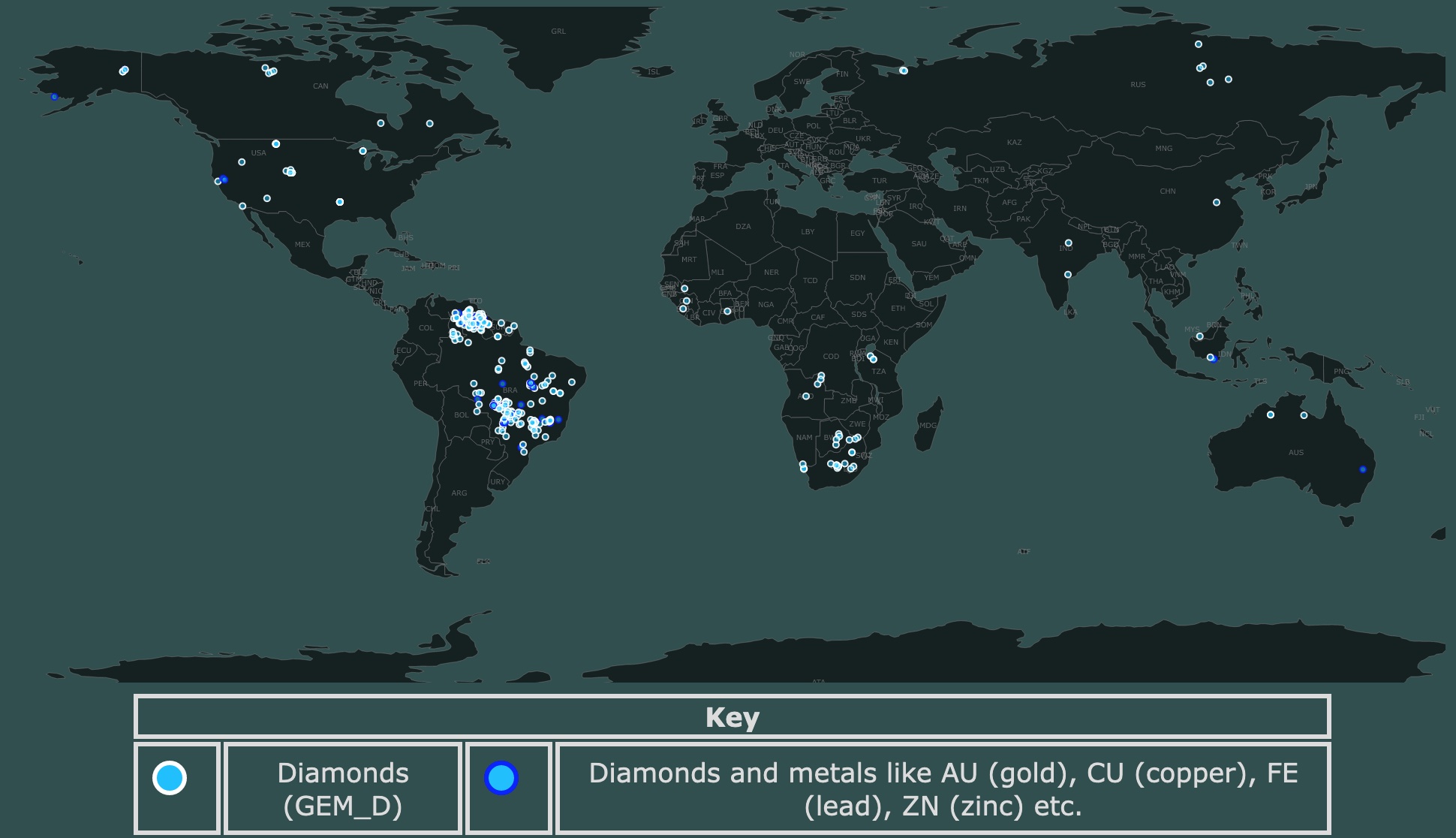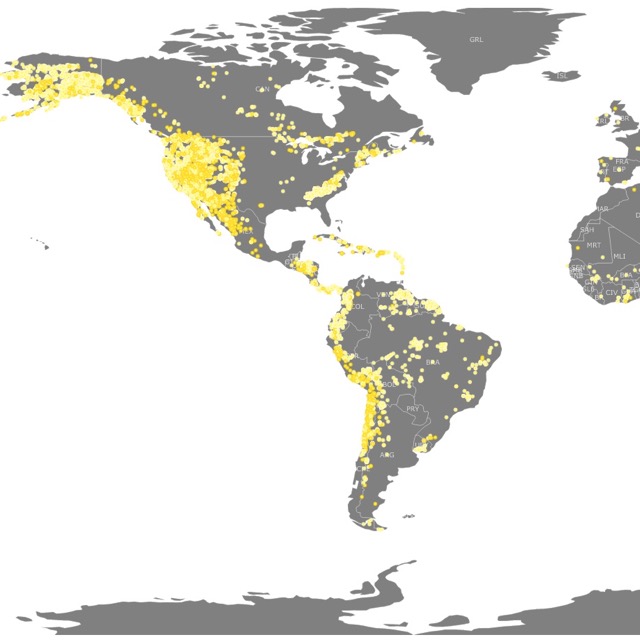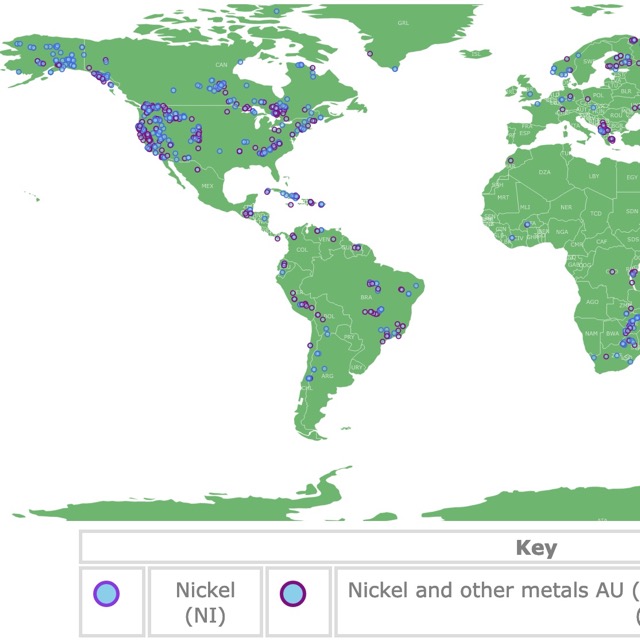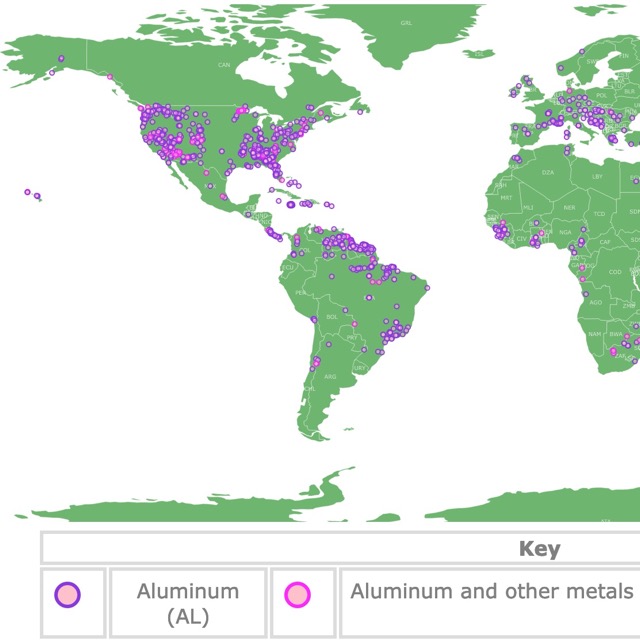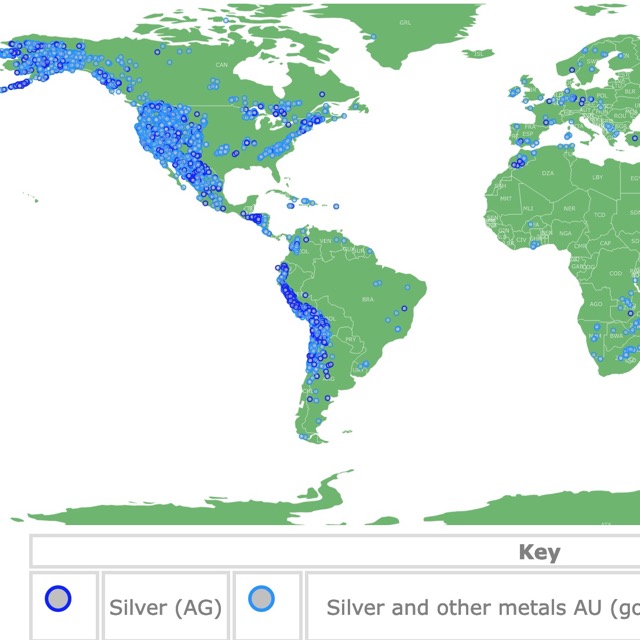Map of Diamond Deposits Worldwide
This map depicts World Diamond Deposits in white and blue. For the site name and more detail, hover over the map. To take a closer look, zoom in. For more information, scroll down.
| Key | |||
|---|---|---|---|
| Diamonds (GEM_D) | Diamonds and metals like AU (gold), CU (copper), FE (lead), ZN (zinc), etc. | ||
DIAMONDS
Diamonds are gemstones of incredible beauty, brilliance, and luster. But their characteristics are not limited to looks.
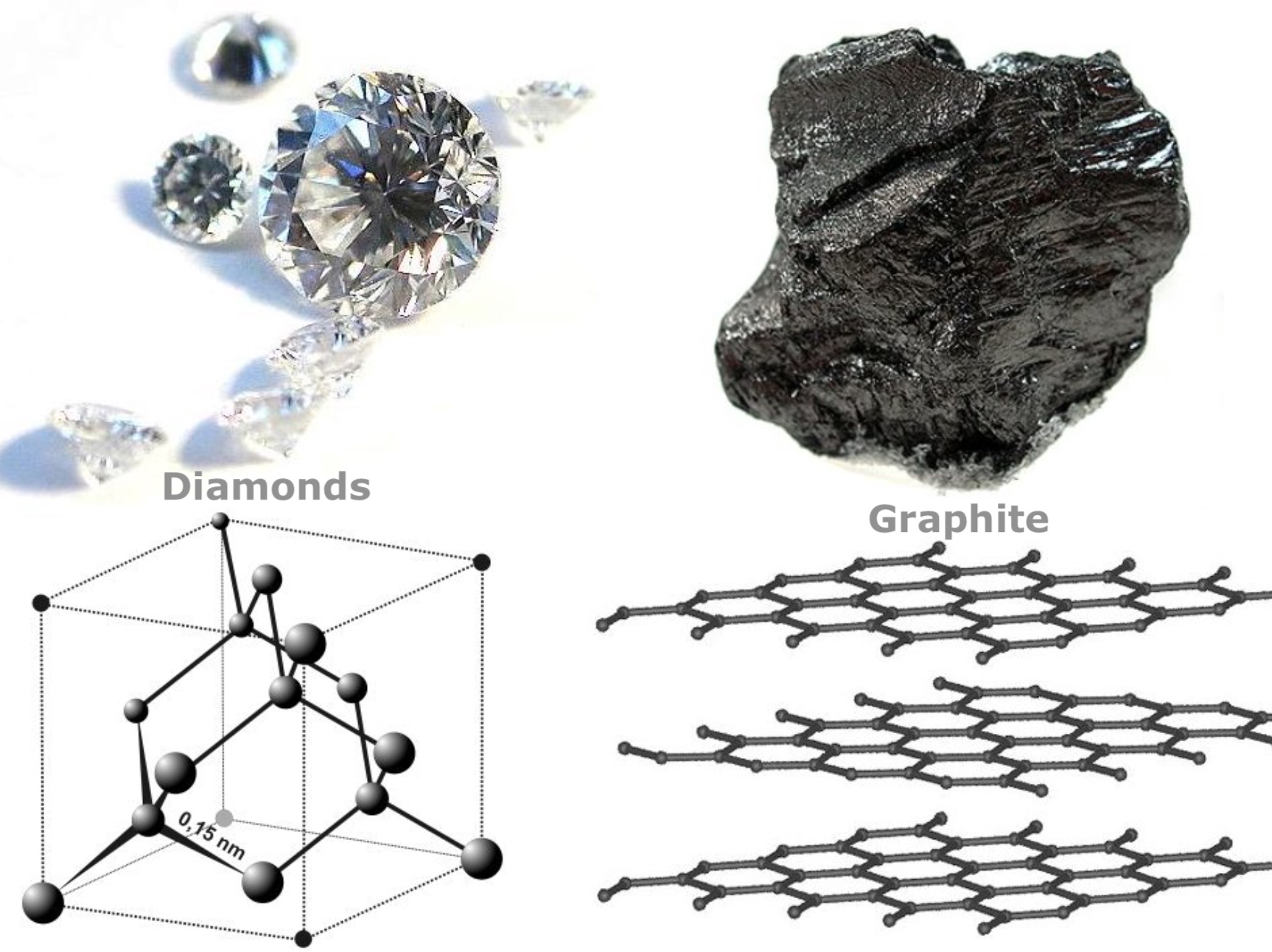
Diamonds are the hardest, least compressible, and stiffest material known. They are the best thermal conductors, with a low thermal expansion. They are also chemically inert to most acids and alkalis. Furthermore, diamonds are transparent from deep UV to infrared.
Diamonds and graphite are non-metals of 99.9% carbon (C) atoms.
Diamonds and graphite are made of two distinct crystalline forms. The C atoms in a lattice arrangement give diamonds their incredible properties. Uni. Bristol.
The atoms in a diamond are arranged in a regular tetrahedron. Each carbon atom is surrounded by four other carbon atoms.
Meanwhile, graphite is a soft, black substance used to make pencils. In graphite, each carbon atom forms two single bonds and one double bond.
Graphite resembles a bunch of long, flat molecules stacked in a pile. The individual molecules cannot be separated, but the layers are easily separated. Source: Brilliant.org.
When diamonds have trace elements, they change the diamond color and fluorescence or have unique properties.
If you think its time to invest in silver, gold, or other commodities, American Bullion can help. Precious Metals' purchasing power and wealth preservation have a proven record of accomplishment. To start today, Sing Up Here!
Diamond Uses
Most diamonds mined do not have the quality to become gemstones. 80% of these diamonds will go towards industrial uses.
For example, thanks to their hardness, they are used for industrial drills for mining.
Dental tools include diamond tips.
High-end speakers are made of diamonds, so they don't deform or degrade. Computers have components made of diamonds that have a very high heat conductivity. Diamondrocks.
Tiny diamond particles are embedded into saw blades, drill bits, and grinding wheels to increase their ability to cut rigid materials.
Diamond powder, made into a diamond paste, is used for polishing or fine grinding. Source: Mining.
If you are interested in diamonds as jewels, Amazon has The Queen's Diamonds book. This hardcover features the private collection of former Queen Elizabeth II with more than seventy awe-inspiring pieces.
Origin of Diamonds
Opposite to popular belief, diamonds do not form, from coal, although they have a similar chemical composition.
In fact, diamonds formed before the plants and vegetation that turned into coal!
Most diamonds formed 3.5 billion years ago underneath the surface. This is where the pressure and temperature are adequate for them to develop.
The rate at which diamonds were formed is still not entirely known.
In case you want to learn more about diamonds, Amazon has Diamonds: Their History, Sources, Qualities, and Benefits. This book is written by a recognized gemologist and invites the reader on a journey to the world of diamonds. This illustrated guide features hundreds of photos, maps, and diagrams about mining, cutting, and evaluating diamonds!

Diamonds formed in Earth's Mantle
Diamonds form under the continents in the Earth's mantle. This is where the heat and pressure are critical for their formation. This area is 90 miles (150 km)underneath the surface is more than 2,000°F, and it is called the "diamond stability zone".
From there, they were carried to the surface by deep-source volcanic eruptions. These deep-source eruptions were very violent and have never been witnessed by modern humans.
Not all eruptions pass through diamond stability zones. This is the reason why diamonds are so rare.
These eruptions form the kimberlite and lamproite pipes.
These eruptions carry most of the commercial diamond deposits. The diamonds are left in the vertical Kimberlite conduits that sometimes extend down for miles.
This type of diamond formation can also be seen in the U.S. at the Crater of Diamonds State Park in Arkansas. This is the only location where tourists can mine for diamonds.
Diamonds Formed in Subduction Zones
Nevertheless, some diamonds formed in subduction zones. The carbon from these diamonds comes from things found at the bottom of the ocean, like shells and dead marine organisms.
These diamonds also have inclusions of minerals from the oceanic crust.
These diamonds do not form as deep; about 50 miles below the surface.
Many Indian diamonds were created by subduction and continent collision that continues to be pushed upward today.
Rocks formed in subduction zones are extremely rare. No known commercial diamonds have been found from this source and sold by jewelers.

Diamonds Formed From Asteroid Impact
The third way diamonds may form is through the impact of asteroids.
The largest diamond field in the world was created by an asteroid that fell in Siberia. The impact was so strong that it melted the surrounding graphite creating the Popigai Crater.
The Popigai Crater holds trillions of carats, but most are 2mm in diameter. Because of their size and low purity, they are adequate for industrial uses.
Meteor Crater in Arizona also left diamond structures surrounding its crash site.
Diamonds Formed Inside Meteors
Some diamonds were crystallized inside meteors. These are tiny diamonds that are only a couple of nanometers in diameter.
They probably formed during collisions with other meteors. For example, the Allende meteorite contains diamond particles. Source: Owlcation.
Diamond Deposits
Primary Deposits
Primary Deposits are found with the original host rock. These deposits are also called pipes or diatremes.
As mentioned before, the host rock is called kimberlite or lamproite.
Kimberlite diamond pipes have the shape of a carrot and extend deep into the ground.
Lamproite pipes are shallower and have champagne glass shape craters.
An example of a lamproite diamond pipe is the Argyle mine in Western Australia. This mine is on the map above. This is a source of pink and red diamonds.
Primary deposits are mined as open-pit mines.
Secondary Deposits
These deposits form above the pipe, next to the pipe, or are transported by streams or deposited on the seafloor.
Diamonds transported by rivers are called alluvial deposits. These deposits are usually the easiest to mine.
Alluvial operations are often found in Sierra Leone, Angola, and South Africa. Collection from some alluvial deposits yields over 90% gem-quality diamonds.
Marine deposits are formed when rivers carry the diamonds to the ocean.
The wave action of oceans accumulates diamonds at the base of the surf zone. In some areas, the sea level dropped, leaving diamonds on beach deposits.
Marine deposits are common in the Atlantic coast of South Africa and Namibia.
Marine diamonds have survived the action of the waves, therefore, have a higher quality and higher carat.
Some marine deposits may be found offshore and require remote-controlled mining vehicles. Source: Gemscience.
Geographic Sources of Diamonds
Diamonds used to come from India and Borneo. You can find these mines on the map. Nevertheless, these sites have been depleted.
In the 19th century, Brazil and South Africa became common sources of diamonds. Today, diamonds come from different places worldwide.
Because diamonds are 99.95% made of carbon, the differences in chemical composition may help researchers find where diamonds come from.
Russian diamonds are known for their fluorescence as they incorporate nitrogen into the crystal lattice as part of their formation.
Diamonds from Sierra Leone may have a yellow tint. While the diamonds from Australia are pink or red.
Learning about mining and diamonds does not make you richer, but buying and selling them will. Owning physical precious metals in a retirement account is a prudent and secure plan for your financial future. For more information go to American Bullion.
Largest Diamond Mines
Aikhal, Rusia
Aikhal is a mine in Sakha (Yakutia) in Rusia. This mine is estimated to contain 175.5 million carats (Mct) of probable reserves.
The mine has several deposits mined through pipes and open-pit methods.
Jwaneng, Botswana
This mine is estimated to hold 166.6 Mct.
This is considered to be the world's richest diamond mine by value.
Udachny, Rusia
Udachny diamond mine is located in the Eastern-Siberian Region of Yakutia, Russia. This is the third-largest diamond mine and the world's fourth-deepest open pit mine.
The Udachny pit is currently 630m deep. Mining at the Udachnaya kimberlite pipe has been going on since 1971.
This mine is estimated to contain 164.46Mct.
Mirny, Russia
Mirny or Mir is another mine in Yakutia, eastern Siberia.
The underground diamond mine was estimated to contain 57.77Mct of reserves. Source: Mining Technology.
Mirny is also the second-largest manmade hole in the world. It is surpassed only by Bingham Copper Mine in Utah.
Excavation of the pit began in 1955, and today it is 1,722 feet (525 meters) deep and 3,900 feet (1.25 kilometers) across.
Stalin ordered the construction of the mine to fulfill the Soviet Union’s need for industrial-grade diamonds following the war.
The harsh, frozen Siberian landscape made working on the mine very difficult. Jet engines were used to melt the permafrost surrounding it; when that failed, explosives were used.
During its peak years of operation, the mine produced over 10 million carats of diamonds annually. Many were gem-quality.
Open-pit mining has stopped here. Mining work is continuing by underground methods. Source: Atlas Obscura.
Kimberley Mine, South Africa
The Kimberley Mine, or the Big Hole, is an open-pit and underground mine in Kimberley, South Africa.
This is not one of the largest mining sites today.
This mine started in 1871 and was depleted by 1914. For a while, it was claimed to be the world's biggest mining hole dug by hand.
The mine is 1,519 ft wide (nearly a half-kilometer wide diameter) and has a depth of 705ft (215 meters). Kimberley.
Resources for World Diamond Deposits Map
The shapefiles with diamond deposits are from U.S. Geological Survey mineral databases; MRDS and MAS/MILS Data Series 52 By: E.J. McFaul, G.T. Mason, W.B. Ferguson, and B. R. Lipin. It can be downloaded from MRDATA.
The Shapefiles with countries were downloaded from Natural Earth.
This map will be updated with new data! To receive updates on this and more nature maps, join my email list!!!!!!!
Made by Luz K. Molina with D3.js.
